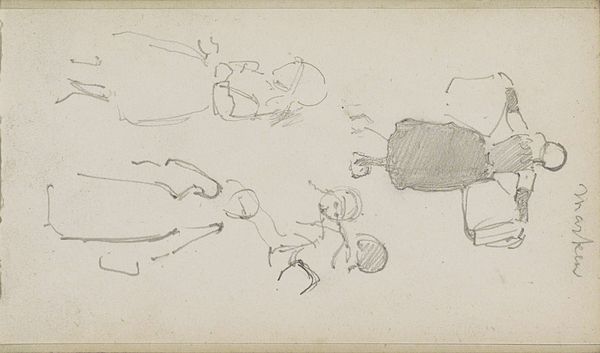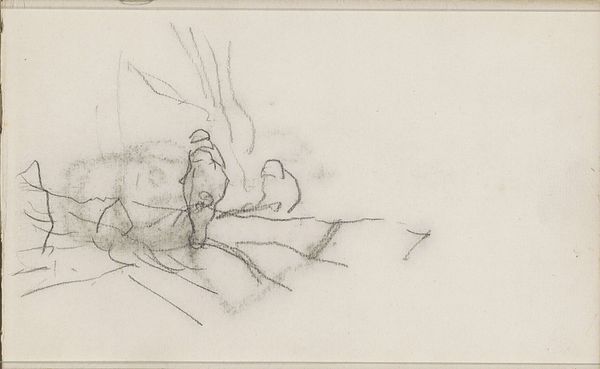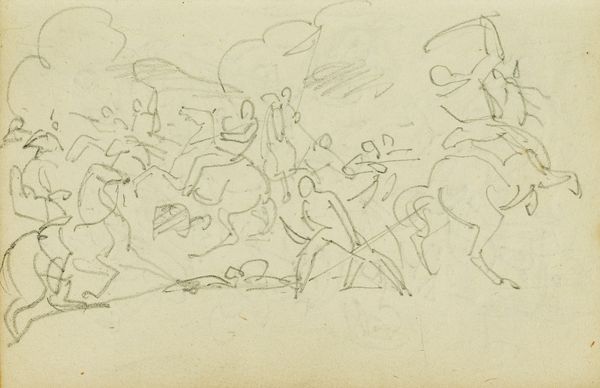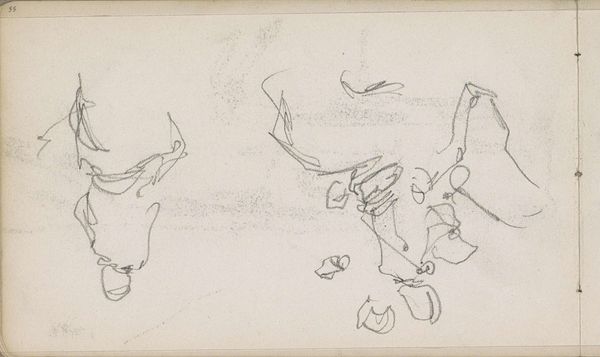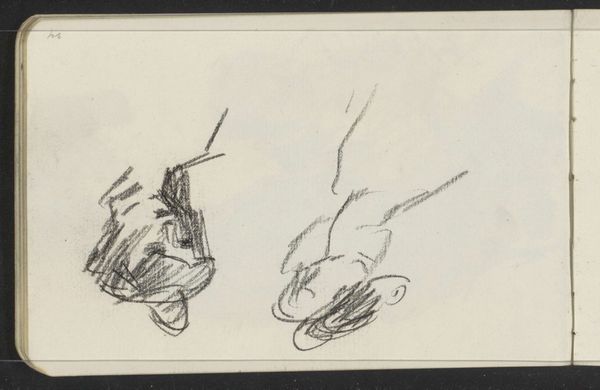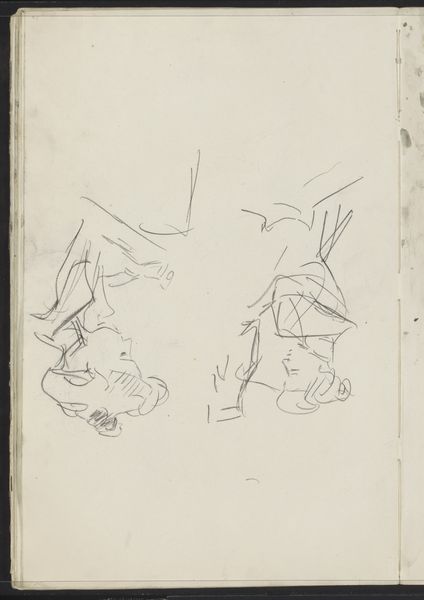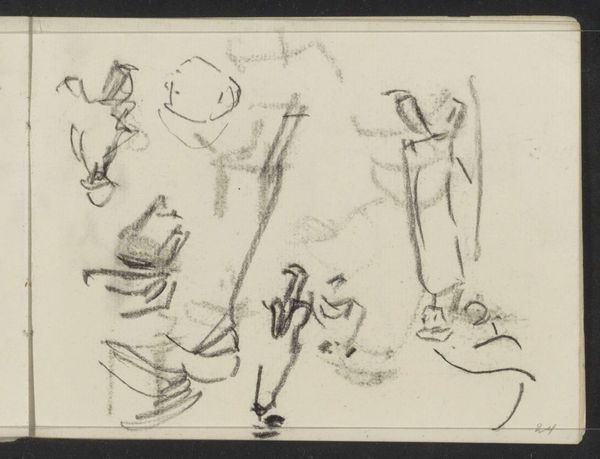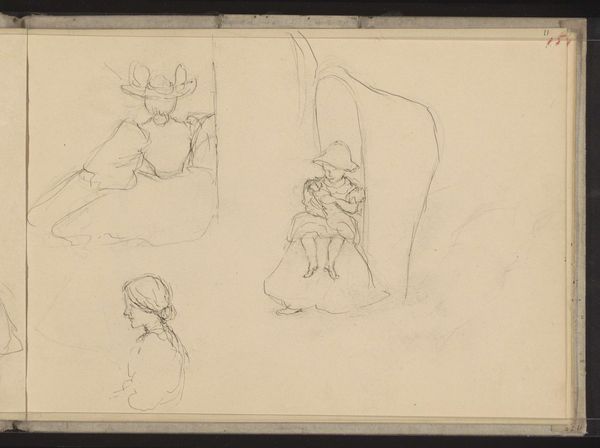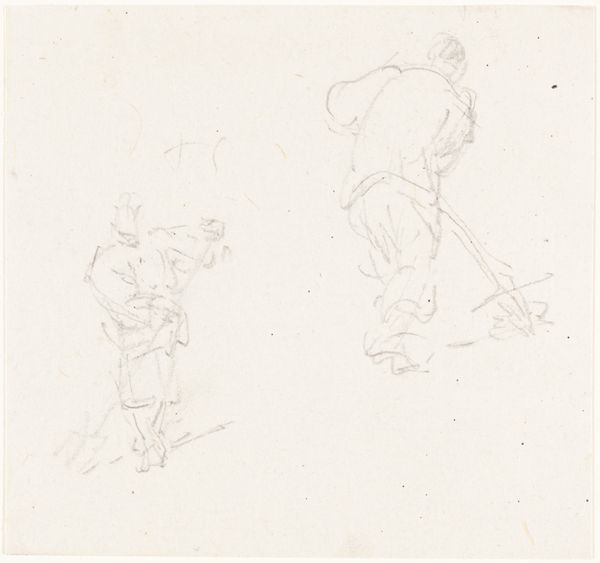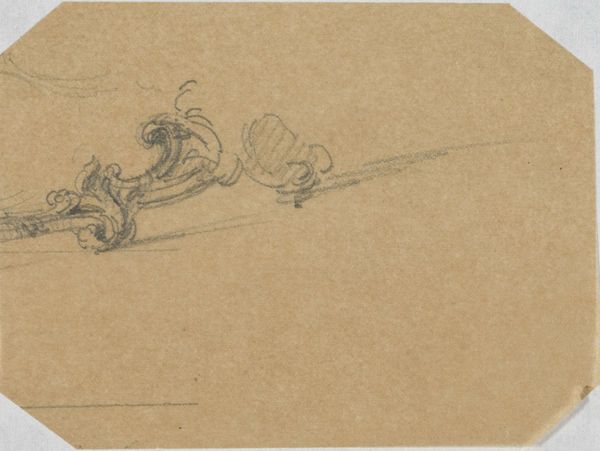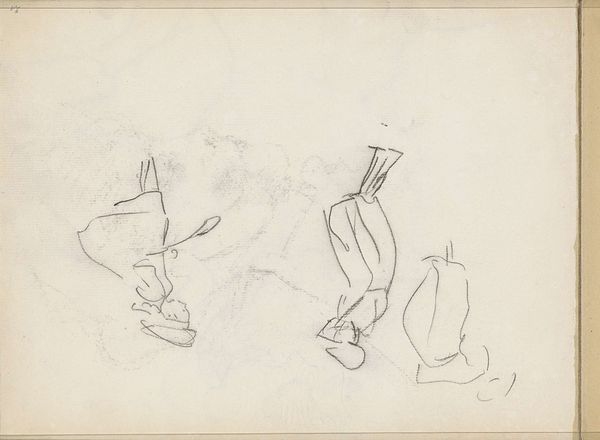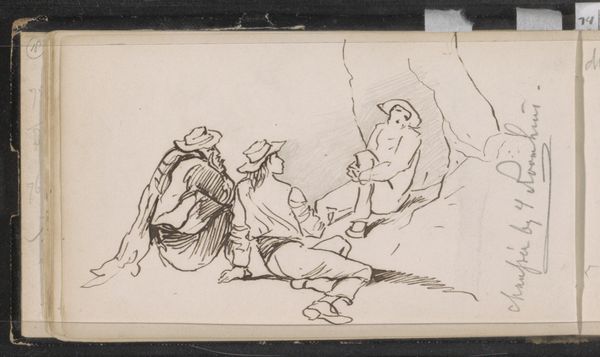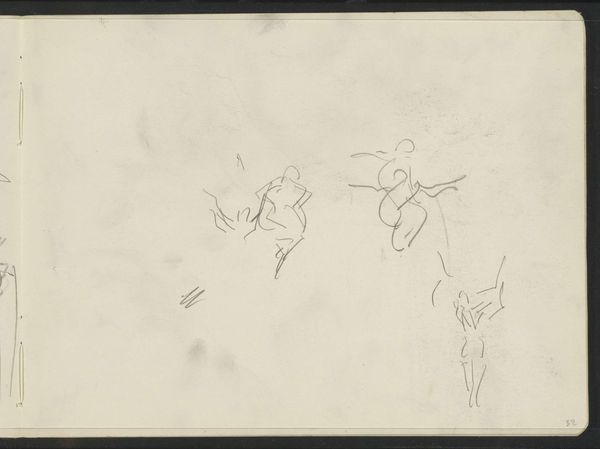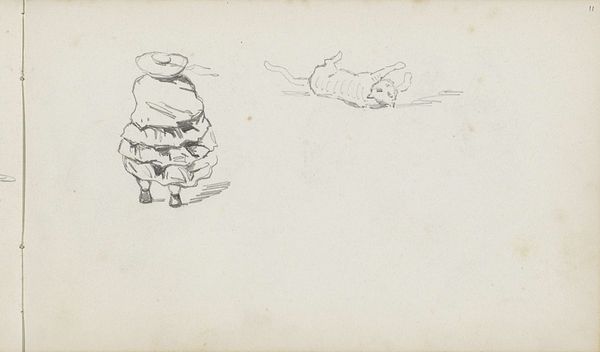
Copyright: Rijks Museum: Open Domain
These figure studies, possibly of a washerwoman, were created by Isaac Israels using graphite on paper. The choice of material and technique here is crucial, graphite being easily portable and erasable. This allowed Israels to rapidly capture fleeting impressions. The looseness of the marks mimics the subject of the drawings: the washerwoman, and all the manual labor that the name implies. The visible, sketchy lines not only give us insight into the artist’s process but also foreground the labor involved in the production of the artwork itself. Through the softness and malleability of graphite, Israels manages to depict the physical exertion of labor. The quick, economical marks speak to the social context of the washerwoman’s work, and that of the artist. Israels had an ability to notice and capture the life of the working class, portraying the unglamorous realities of labor often overlooked by more academic artists. So next time you look at a drawing, consider the ways in which the materials and processes used reflect the lives and experiences of both the artist and their subjects.
Comments
No comments
Be the first to comment and join the conversation on the ultimate creative platform.
